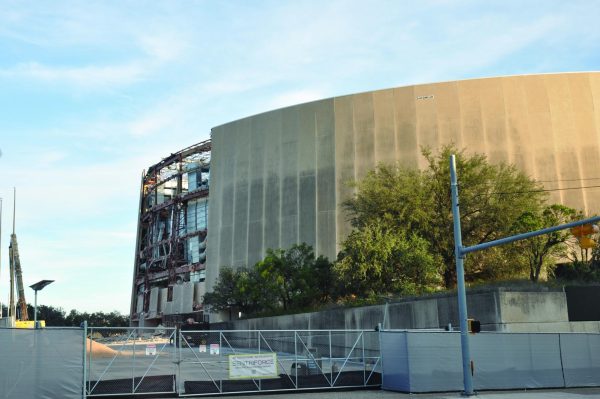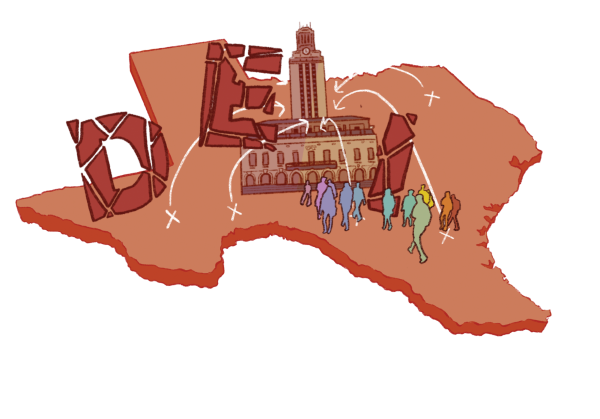All about LASA applications and admissions
February 20, 2018
The 2018 admissions season, the second year to use LASA’s admissions policy changes, is drawing to a close. The changes were created to increase LASA’s diversity in its student population.
Last year, LASA included an 80 and 20 percent split in the application process. This allowed for 80 percent of admitted applicants, 300 students, to be accepted through a blind, holistic application review. The next 20 percent of admitted applicants are ranked by rubric score and then accepted with special circumstances, in which the student has to meet at least three of the five requirements in order to be accepted. Academy Director Andy Paulson said this new process allowed for a more diverse range of students.
“It’s tricky because you want to have kids who are ready and prepared or ready and not prepared but be able to come in and do it because it’s hard here compared to your traditional school,” Paulson said.
According to Paulson, the results from the application change caused a slight increase in diversity. There were more minority students accepted in the current freshman class than in previous classes. The goal of this admissions change was to represent the city of Austin’s diverse population more accurately.
“The increase wasn’t drastic,” Paulson said. “It didn’t really change our numbers overall in the school but when you look at just the freshman class, it increased diversity a little bit. So it’s going to have an impact, we just need three more years to get through it. The goal is to be similar or identical to Austin’s diversity.”
Principal Stacia Crescenzi said that the admissions criteria are based on the city of Austin’s census. LASA uses data collected from the U.S. Census Bureau that is released every 10 years. This information describes what would be the estimated demographics within the city.
“Overall, we would like our population of students at LASA to more closely reflect the city of Austin,” Crescenzi said. “If after three years to four years, it doesn’t feel like there’s enough of a change or trending towards matching Austin, [it] takes us to 2020 which is the next time there is a census. So right now since were in 2018, the data might be totally off because census numbers come out every 10 years.”
According to Crescenzi, the data from the first year of changed admissions policy is not sufficient to identify a specific cause for the increased diversity in the next pool of applicants.
“Because it’s only year of data, I can’t say it’s because of the admissions policy,” Crescenzi said. “You can’t say the why on one year of data. There might be more kids who applied. We probably need three or four years before we say there is a cause. I can say that the numbers are higher but there’s not enough data to support that’s the cause yet.”
Crescenzi said that administration plan to wait until three classes have undergone the new admissions policy changes before reevaluating, to understand the effectiveness of it.
“We’re waiting three or four years in order [to see] if the policy did the changes we wanted it to do,” Crescenzi said. “25 percent of the whole population was accepted under the admissions policy. So next year it would be 50 percent, then 75 percent. By the time we get to that 75 percent, we have a pretty good idea if we’re seeing a trend or not. That would be after we accept kids this time next year.”
Last year, Austin Independent School District (AISD) announced that LASA and other AISD schools will no longer be allowed to accept students who are not already part of the district. This eliminates approximately 30 to 40 potential students, adding another restriction to the admissions policy. The only exception are students whose parents are employed by the district in some capacity.
“As LASA gets more attention nationally, it’s an Austin ISD program and it’s for current Austin ISD tax payers,” Paulson said. “[The restriction is] for somebody else who is coming, who lives in Round Rock or someone else who wants to take advantage of what we have but never paid into the taxes here.”
Paulson said this change only affected several students overall.
“I think our numbers are down a little bit but I think it’s comparing apples to oranges because this is the first year really where we have not let people outside of the district apply,” Paulson said. “So that’s what I think is accounting for lower numbers and I think it’s 20 or 30 kids lower.”
Although there has been quite a few recent changes to LASA’s overall admissions policies, there are still essential elements that have stayed the same. The entire blind holistic review process and COGAT testing haven’t been changed.
“We have everything else that is turned in, the application, the report cards and the STAAR scores,” Paulson said. “All the stuff is submitted and then put into FileMaker, a program we use, then we put it in a spreadsheet and use the rubric. That’s how we get our top 300 kids.”
According to Paulson, it’s hard to gauge the actual efficacy given how long it’s been since they were implemented and that there have been many recent changes to LASA’s admissions policy.
“It’s always good to change up the application process but it was the goal of making LASA more diverse for all students and have the ability to go into LASA,” Paulson said. “Similar to what we’re doing with colleges, we’re essentially college prep and colleges are using that service to get students accepted so we want to do the same thing.”









